This white paper discusses how ITIL 4 and the IT4IT standard can be combined to manage the new digital reality. ITIL 4 focuses on practices, culture, and behavior while IT4IT focuses on information flows and automating IT activities. Both aim to holistically manage IT service and product lifecycles. The paper outlines the key components of ITIL 4 and IT4IT and how their synergies allow for a more streamlined and automated delivery model leveraging Agile and DevOps.
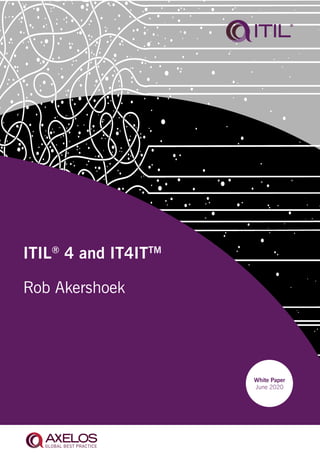

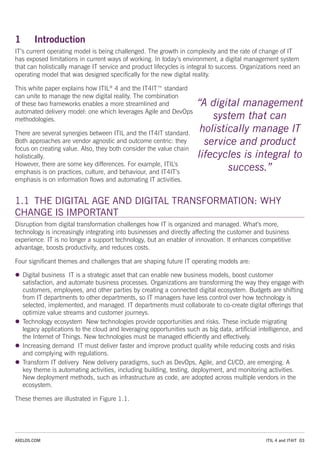
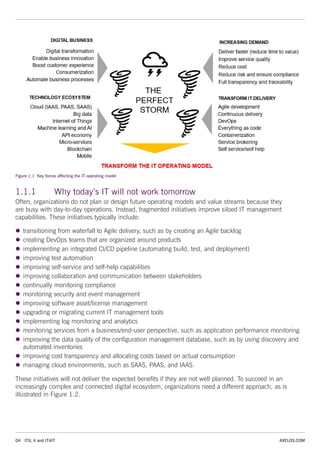
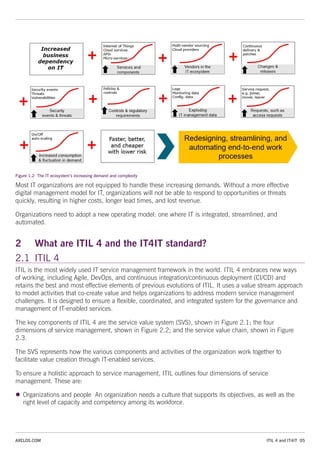
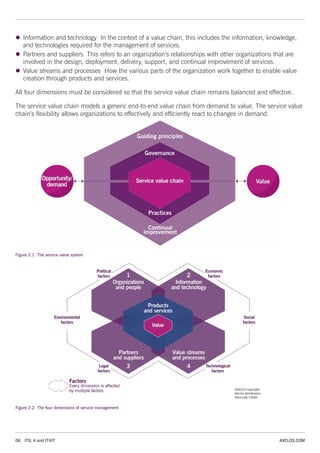



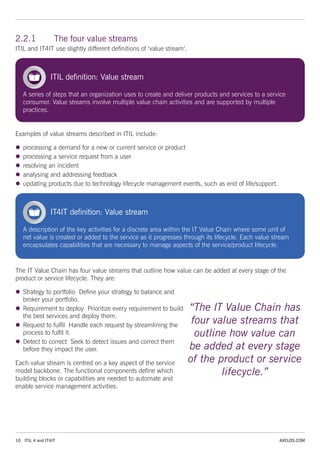

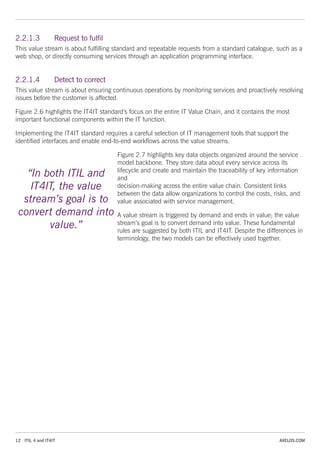
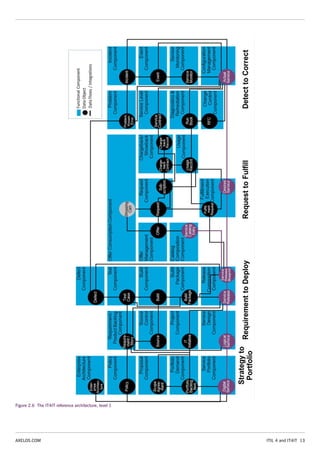

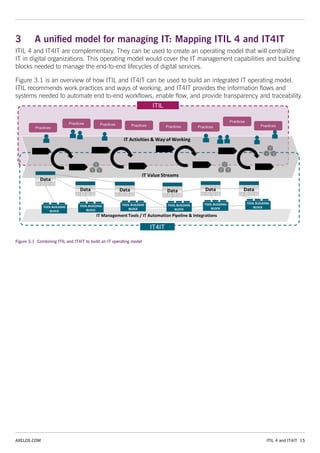


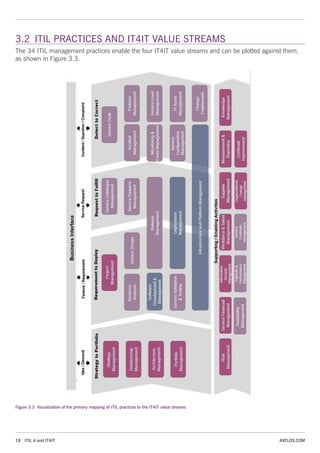
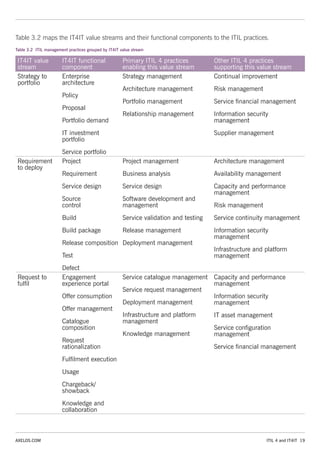


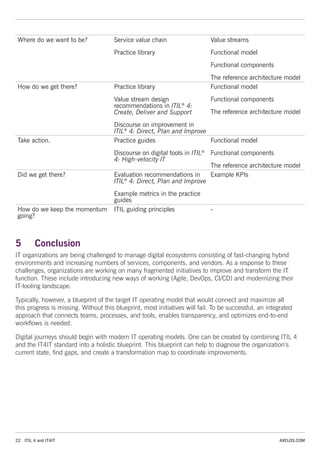

![24 ITIL 4 and IT4IT AXELOS.COM
7 Sources and further reading
Akershoek, R. (2016). The IT4IT Management Guide for managing the business of IT. Van Haren
Publishing, Zaltbommel.
Akershoek, R. (2019). DevOps + ITSM: A Merge Request. Webinar. Accessible at: www.brighttalk.com/
webinar/devops-itsm-a-merge-request/ [Accessed 18 March 2020]
Akershoek, R. (2019). Is ITIL 4 DevOps Ready? Webinar. Accessible at: www.brighttalk.com/webinar/is-itil-
4-devops-ready/ [Accessed 18 March 2020]
Akershoek, R. (2019). ITIL 4 service value chain data flows (input and outputs). Online infographic.
Accessible at: www.slideshare.net/robakershoek/itil-4-service-value-chain-data-flows-input-and-
outputs-135507433 [Accessed 18 March 2020]
Anand, A. (2019). ITIL 4: Connecting Key Concepts – Part 1. AXELOS. Online. Available at: www.axelos.
com/news/blogs/april-2019/itil-4-connecting-the-key-concepts-blog-part-1 [Accessed 18 March 2020]
AXELOS (2019) ITIL®
Foundation: ITIL 4 Edition. TSO, London.
AXELOS (2020) ITIL®
4: Create, Deliver and Support. TSO, London.
AXELOS (2020) ITIL®
4: Direct, Plan and Improve. TSO, London
AXELOS (2020) ITIL®
4: Drive Stakeholder Value. TSO, London.
AXELOS (2020) ITIL®
4: High-velocity IT. TSO, London.
IT4IT™ Reference Architecture, Version 2.1, ©The Open Group. (2017) Online. Available at: https://pubs.
opengroup.org/it4it/refarch21/[Accessed 18 March 2020]
Lykov, A. Jouravlev, R. (2018). . AXELOS. Online. Accessible at: www.axelos.com/case-studies-and-white-
papers/taking-it4it-on-the-itsm-journey [Accessed 18 March 2020]
The Open Group site: www.opengroup.org/IT4IT [Accessed 18 March 2020]](https://image.slidesharecdn.com/whitepaperitilandit4itrobakershoek-221128175004-3e66ebcc/85/Using-ITIL-4-and-IT4IT-together-24-320.jpg)
